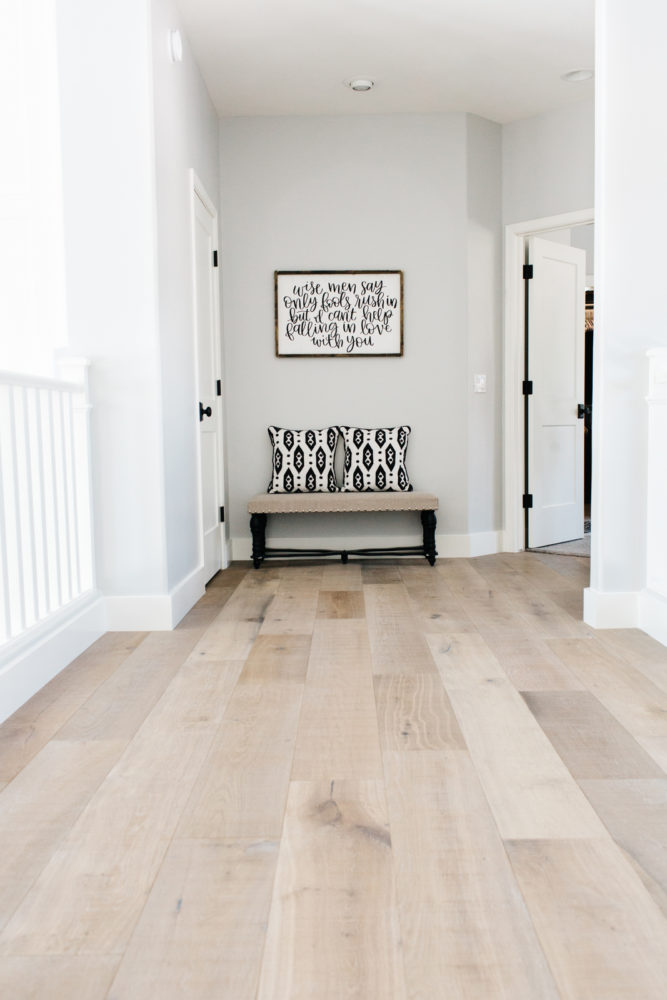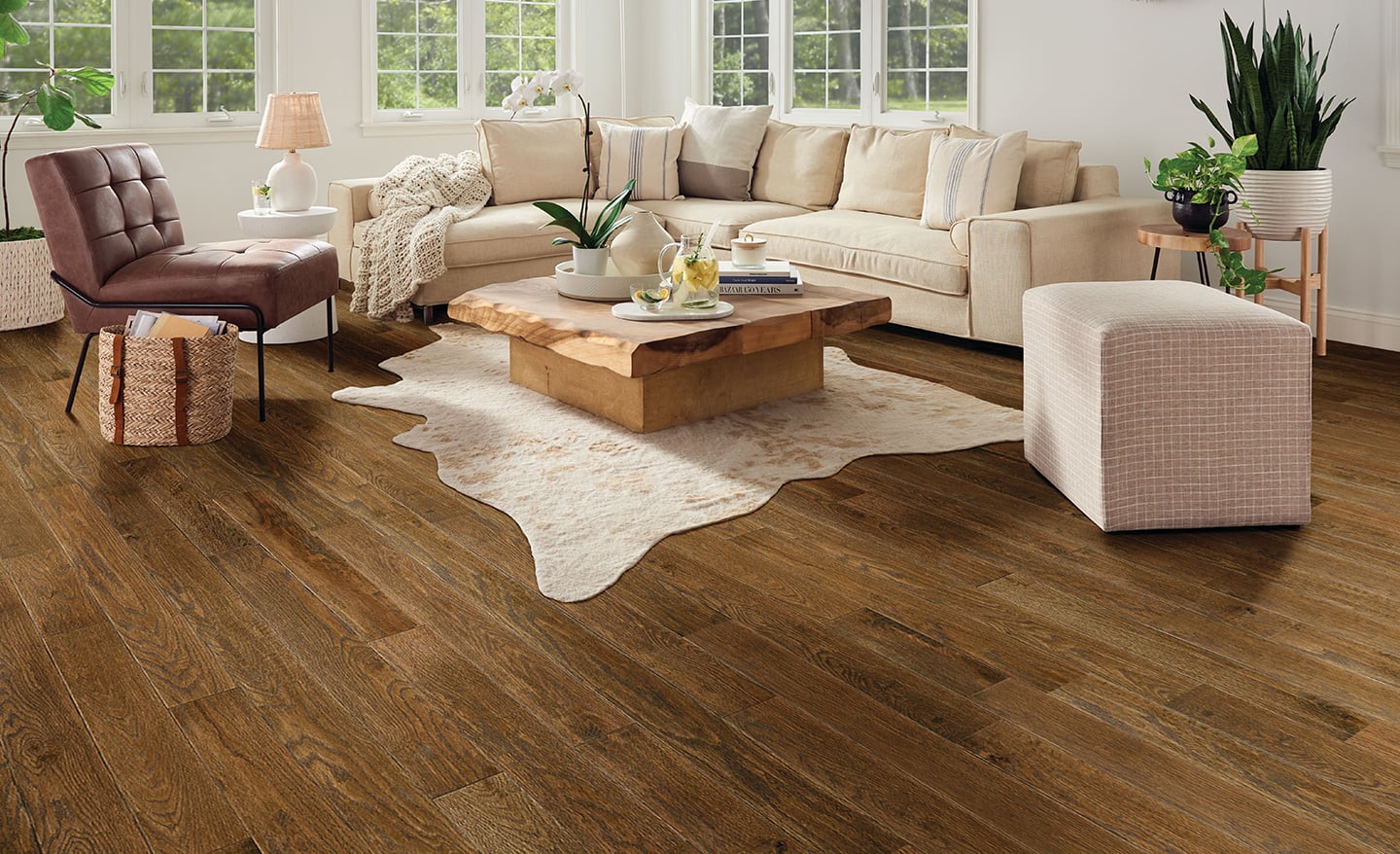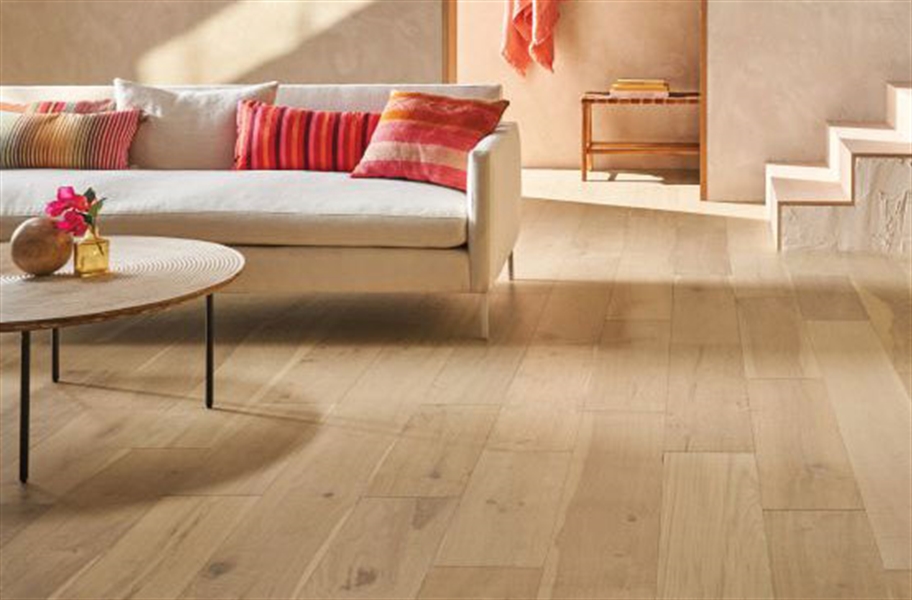Are you looking to elevate your home’s interior with the timeless elegance of hardwood floors but are concerned about the cost and maintenance? Engineered hardwood flooring could be the perfect solution for you! With my personal experience in home renovations, I’ve discovered that engineered hardwood offers a beautiful, sustainable, and practical option for homeowners. In this guide, we will explore the ins and outs of engineered hardwood flooring, décor tips, pros and cons, and everything else you need to know to make an informed decision.
What is Engineered Hardwood Flooring?
Engineered hardwood flooring consists of a top layer of solid hardwood, which is adhered to multiple layers of plywood or high-density fiberboard (HDF). This construction provides enhanced stability and durability compared to traditional solid hardwood floors, making it an optimal choice for various environments.
Key Features of Engineered Hardwood
- Natural wood appearance: The top layer is made of real hardwood, giving it an authentic look.
- Stability: Can withstand temperature and humidity changes better than solid hardwood.
- Versatility: Suitable for installation over various subfloors, including concrete.
- Eco-friendly options: Many manufacturers offer sustainably sourced wood.
Benefits of Engineered Hardwood Flooring
1. Cost-Effective
One of the primary advantages that attracted me to engineered hardwood flooring is its cost-effectiveness. Compared to solid hardwood, engineered hardwood typically costs less while maintaining aesthetic appeal.
2. Easy Installation
Engineered hardwood is designed for easy installation. Most products feature a click-lock mechanism, allowing them to be installed as a floating floor or glued down. My recent experience with a DIY renovation was smoother than I expected, thanks to this feature!
3. Variety of Styles
With wide-ranging options in terms of wood species, colors, and finishes, achieving the desired look for your home is easy. From rustic oak to modern maple, the choices are endless!
4. Resilience and Durability
Engineered hardwood is designed to withstand wear and tear, making it ideal for high-traffic areas. My own home has seen countless family gatherings, and the floors still look amazing!
Comparison Table: Solid vs. Engineered Hardwood
| Feature | Solid Hardwood | Engineered Hardwood |
|---|---|---|
| Cost | Higher | Lower |
| Stability | Less stable in humidity | More stable |
| Installation | More difficult | Easy |
| Refinishing | Can be refinished | Limited refinishing |
| Aesthetic Options | Limited to wood species | Wide variety |
How to Choose the Right Engineered Hardwood Floor
1. Consider Your Lifestyle
Think about your daily activities and the traffic in your home. If you have pets or children, you may want to choose a more durable finish.

2. Select the Right Wood Species
Different wood species offer varying levels of durability and appearance. For example, oak is hard and durable, while softer woods like pine may dent easier.
3. Finish and Color
Decide on the finish that reflects your style—whether it’s matte, satin, or glossy. The color should also harmonize with your current décor.
Engineered Hardwood Finishes
- UV-Cured Finish: Offers high durability and resistance to scratches.
- Polyurethane Finish: Common for its moisture resistance.
- Oil Finish: Gives a warm look but requires more maintenance.

Engineered Hardwood Installation Tips
1. Prepare the Subfloor
Before installation, ensure the subfloor is clean, dry, and level. This can prevent issues later on.
2. Acclimate the Wood
Allow the engineered hardwood to acclimate for a minimum of 48 hours in the room where it will be installed.

3. Use the Right Tools
Invest in quality tools such as a miter saw, tapping block, and spacers to ensure a smooth installation process.
Common Installation Methods
- Glue-Down: Ideal for concrete subfloors.
- Floating Installation: Best for DIY projects.
- Nail/Staple Down: Suitable for plywood or OSB subfloors.

Maintenance of Engineered Hardwood Floors
Regular Cleaning
Regular cleaning will keep your floors looking great. I recommend using a microfiber mop and a cleaner made specifically for wood floors.
Preventive Care
Use furniture pads under heavy furniture and avoid sudden temperature changes to maintain the integrity of the flooring.

Dealing with Scratches
Minor scratches can often be buffed out or repaired with touch-up kits specifically designed for engineered hardwood.
Decor Ideas to Complement Engineered Hardwood Flooring
1. Area Rugs
Area rugs can add warmth and style to a room. Choose patterns and textures that complement your flooring.

2. Contrasting Colors
Pair dark wood floors with lighter furniture or vice versa to create visual interest.
3. Wall Colors and Decorations
Choose wall colors that complement the tone of your engineered hardwood. Soft neutrals often work well!

Pros and Cons of Engineered Hardwood Floors
Pros
- Cost-effective
- Easy installation
- Durable and resistant to moisture
- Available in a variety of styles
Cons
- Limited refinishing ability
- Can be prone to scratching compared to solid hardwood
- Quality varies between manufacturers
FAQs About Engineered Hardwood Flooring
1. Is engineered hardwood waterproof?
Engineered hardwood is not completely waterproof but is more water-resistant than solid hardwood. It’s advisable to clean spills promptly to prevent damage.
2. Can you refinish engineered hardwood floors?
Engineered hardwood can be refinished, but the number of times you can do it depends on the thickness of the top layer of hardwood. Most can be refinished once or twice.
3. How long does engineered hardwood last?
With proper care, engineered hardwood floors can last 20 to 30 years!
4. Can you install engineered hardwood over radiant heating?
Yes, engineered hardwood is suitable for installation over radiant heating systems, making it a versatile option for various home environments.
Conclusion
Choosing engineered hardwood flooring is a smart investment for any homeowner looking to enhance their space with beauty and practicality. From its easy installation to its vast range of styles, it accommodates lifestyles while delivering an elegant finish. I hope this guide equips you with the knowledge to make the right flooring choice for your home. Happy decorating!